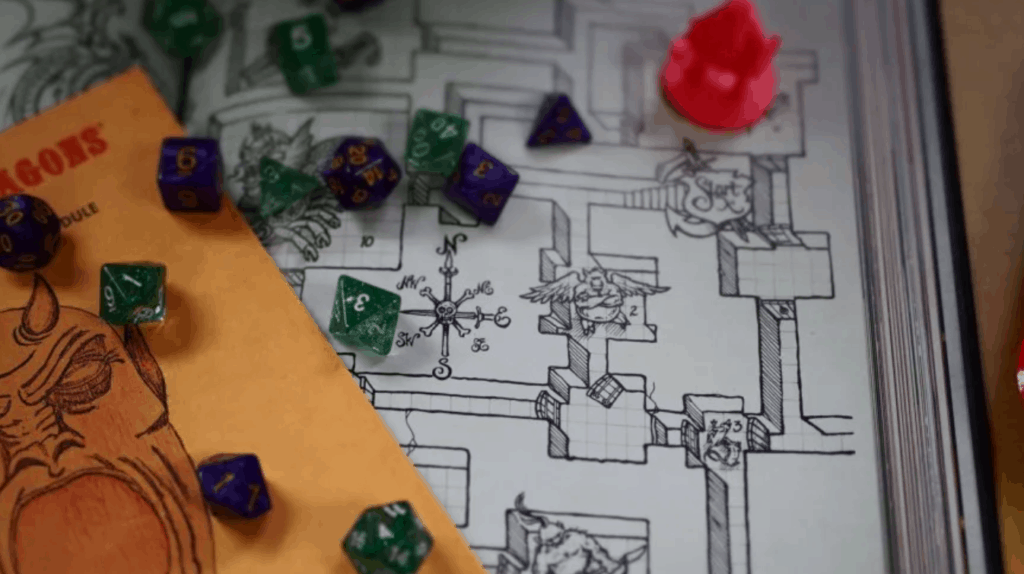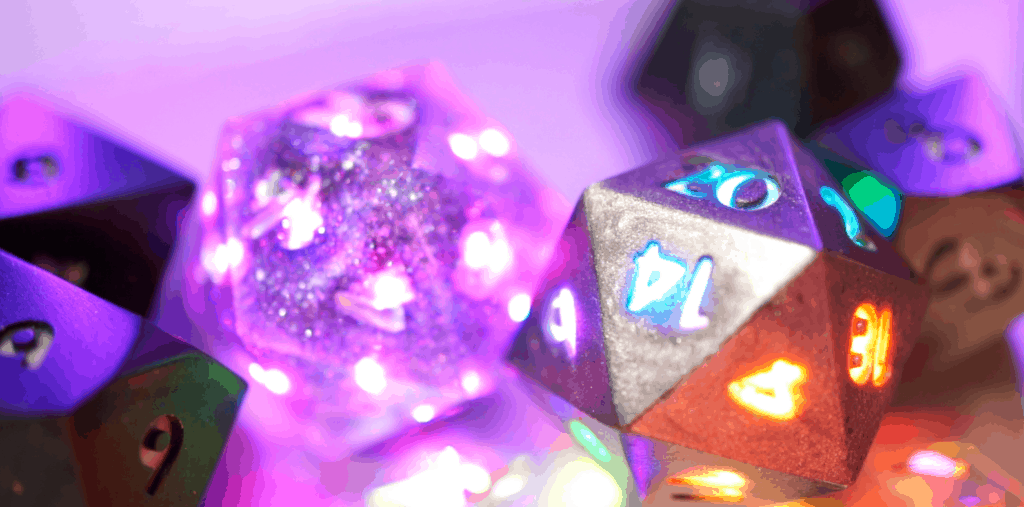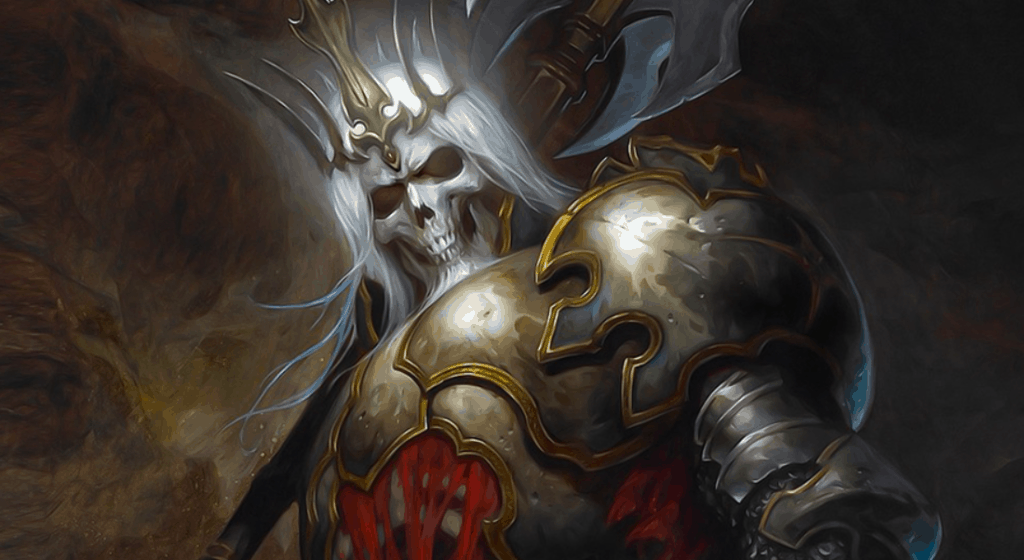Dungeons and Dragons have so many weapons, spells, and tactics that it is hard to keep up with what is the optimal strategy. In this ultimate guide to the Crown of Madness 5e, I will go in-depth about this level two spell. This guide aims to inform both new and veteran players about one of my favorite spells in 5e and share some tactics and insights I have gained over the years.
In this Crown of Madness 5e Guide, I mainly write from a dungeon master perspective. This is because most of my experience comes from DM´ing. That being said, that also gave me a ton of insight in regard to when spells can mess up a dungeon master’s plan. Crown of madness is one of those spells; if you use it right.
What Does Crown of Madness do in 5e DnD?

Let’s start with the basics of the spell and break those down, so we know exactly what we are dealing with. To find the crown of madness spell rules, you have to go to your Player’s handbook and flip to page 229.
There we see this about the Crown of Madness spell in the 5th edition:
- A 2nd-level enchantment
- A spell with a 1 action casting time
- A range of 120 feet
- The components used are V, S
- This is a concentration spell and lasts up to 1 minute.
- Classes: Bard, Warlock, Sorcerer, Wizard
This is what the crown of madness does in a nutshell, according to the player’s handbook:
When you cast the Crown of Madness spell, you can choose one humanoid creature that is within the range of the spell. Then, this humanoid needs to do a WIS saving throw. If the creature succeeds, nothing happens. However, if the Humanoid fails its throw, it gets charmed by your spell for up to one minute.
The specific charm that the Crown of Madness places on the spell is that it gets a crown made of twisted jagged iron on its head, and madness starts to glow from its eyes. The effect of this is that the target that has failed the WIS saving throw must use the action before moving on every single one of its turns to do an attack that is melee-based other than itself, and you can pick it. If there are no other creatures in range, the humanoid can act normally.
This sounds pretty overpowered. However, you need to use your own action to maintain control over the creature every turn. If you don’t, the spell ends. The spell also ends if the creature is able to make a saving WIS throw at the beginning of its turns. This nerfs the spell pretty bad. However, in my opinion, the spell is still great in niche situations and definitely not as bad as some people make it out to be.
This is a concentration charm spell, so the basic rules apply!
Reminder: How Does Charm and Concentration Work in 5e

Charm in 5th edition – To fully comprehend how Crown of Madness functions, it is important to at least grasp the basics of Charm spells and how to use them. So let’s start off with how a charming condition works.
When a creature gets charmed, there are some effects that are pretty useful, in my opinion.
- The creature that has been charmed can not attack the charmer.
- The creature that has been charmed cannot use harmful abilities or any magical effects on the charmer.
- As the charmer, you get an advantage on any ability check when you interact socially with the creature that has been charmed.
This all sounds pretty nice. However, like most things in DnD, there are some drawbacks.
- There is a massive amount of creatures that are completely immune to charms. The problem with Crown of Madness is that, almost always, there is a spell that would be a better option whenever you can cast it. However, I do think it still has a great niche use in battles against two creatures.
- There are some major problems with Crown of Madness that need to be addressed. As I mentioned in the beginning, it is a concentration spell, so that means you can not cast any other spell. If you do, the Crown of Madness spell ends straight away. There are quite some spells that do require your concentration, like haste which are very strong. However, Crown of Madness, if you are a weaker spell caster, falls at the weaker end of the spectrum.
- One of the major drawbacks of this spell is the WIS saving throw. The spell does nothing if the creature has a successful WIS saving throw, and you lose your attack turn. While this is nothing seriously out of the ordinary, there is one major problem with having creatures that have to do WIS saving throw. On average, Wis is the highest mental ability score in 5e. In layman’s terms, this means everything that forces a WIS saving throw has a higher chance to fail compared to intelligence and charisma.
- So let’s go to the fourth negative. You need to have another creature running around somewhere. The crown of madness only works if you have a creature that our humanoid can attack. If they don’t have one, they will just act as if nothing happened, and you will have lost your attack turn.
- The main negative, in my opinion, in a true saving the worst for last fashion, is that you need to keep using the Crown of Madness spell to maintain it. So you only have your bonus and movement action left if you want to keep using it.
A lot of people call Crown of Madness one of the top worst spells in the entire DnD. I don’t really agree with that. Alright, that is a lot of negatives, but I swear this spell can be great!
Why Crown of Madness is Not as Bad as You Think

Crown of madness shines when you are underwhelmed or have a strong boss monster accompanied by minions.
The first reason for this is that it throws a pretty big wrench in your Dungeon Master’s plans. Almost no DM ever plans for a Crown of Madness spell.
It is perfect when your DM has carefully planned a boss fight with one main monster that has some minions assisting it. If you cast a Crown of Madness on the big boss, and you actually manage to make it miss its WIS saving throw, you all of a sudden have an incapacitated boss that is killing its own minions.
Another use of it is when you have a close-packed horde of enemies, and one of the targets has a ranged attack. For example, let’s say you take over a Pit Fiend, which can cast a Fireball at will. If the Pit Fiend is the boss and has a bunch of smaller lesser devils around it as support, you can do massive damage if they are within 20 feet.
I think this spell shines when you have a caster that isn’t really effective against the group of monsters you are about to fight. By using the Crown of Madness, he is able to take out the strongest monster – if the monster his saving throw for WIS fails – and use it as some kind of vessel to deal damage. This can wreak serious havoc on the enemy and make a near useless caster into a real asset.
There is a good case to be made for Crown of Madness in combination with things like Grease and Web. This works if your fighter helps you drag enemies in range and is able to trip or grapple them.
I do think this is a bit too much work, and you are better off using the spell in the few niche situations where it would be great to use. However, if you are a group of players that enjoys teamwork like this, don’t let that stop you from trying this.
Lastly, I would like to make the point that your Dungeon Master is going to matter a lot in getting the maximum out of this spell. Let’s imagine you have a bunch of humanoids of questionable intellect.
For example, a horde of Goblins. All of a sudden, one of the goblins gets Crown of Madness cast on them and stabs one of his fellow green skins in the back. Realistically speaking, there is no way their reaction would be to ignore this betrayal. This can cause disruption and infighting in the group straight from the beginning.
Frequently Asked Questions About Crown of Madness
Question: Is Crown of Madness a charm?
Answer: Yes, the crown of madness is a charm spell. To effectively charm your target using a Crown of Madness skill, you need to make them fail a WIS saving throw.
Next to it being a charm, it also is a concentration skill. This means that you can not cast any other kind of spell for as long as you are using Crown of Madness. Do you decide to cast another spell anyway, the effect of Crown of Madness stops? The creature will go back to being normal without making any kind of WIS saving throw.
The big benefit of casting a charm spell is that a charming creature can no longer attack the caster. However, this doesn’t really matter when we are talking about Crown of Madness.
Since you are already in control of the attack of the creature you have targeted, it won’t attack you. Keep in mind that there needs to be another creature to attack in the range of the creature for the Crown of Madness spell to work.
Conclusion: Is the Crown of Madness Horrible After all?
I don’t think the statement that the spell is one of the worst in 5e DnD. Yes, Crown of Madness comes with a whole ton of drawbacks and downsides. At worst, it is just a mediocre spell with a lot of competition from other crowd control spells. The fact that it takes your attack action to maintain the power of Crown of Madness is the worst downside.
The spell does shine when the dungeon master understands how a monster would react. If you have a group of low intelligence humanoids, and they get attacked by an ally, they aren’t going to react rationally. There will be chaos, they will attack the perpetrator, and they will not put their full focus on your adventuring party.
- Monks 5e Guide: How to Play as a Monk in D&D - September 13, 2021
- DnD Hobgoblin Guide [Creatures and Playable Race] - September 9, 2021
- The Ultimate DnD Yklwa 5e Guide: Everything You Need to Know - September 5, 2021

